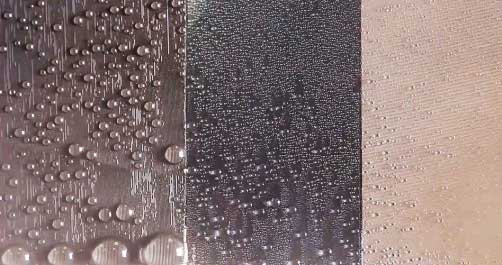Nanowerk March 30, 2018
A team of researchers in the US (Pennsylvania State University, UT Dallas) developed a pitcher plant-inspired slippery surface with hydrophilic chemistry. They added the directional grooves and gave the new surface a microscale roughness that increased the surface area. The rate of water and fog harvesting are directly proportional to the amount of surface area on which droplets can form. The rice leaves-inspired grooves whisk the water droplets away through capillary action or gravity. If the slippery rough surface (SRS) material is produced at scale, they estimate that over 120 liters of water can be collected per square meter of the surface per day, and water harvesting rate can be further increased by optimizing the SRS… read more. Open Access TECHNICAL ARTICLE

This image shows a comparison of water harvesting performance of SRS vs other state-of-the-art liquid repellent surfaces. Credit: Image: Xianming Dai/Nan Sun/Jing Wang/Tak-Sing Wong, Penn State